Looking back at Evil Dead Regeneration, the classic Ash Williams hack-and-slasher
Interview | Play magazine speak to the dev team behind 2005's Evil Dead: Regeneration
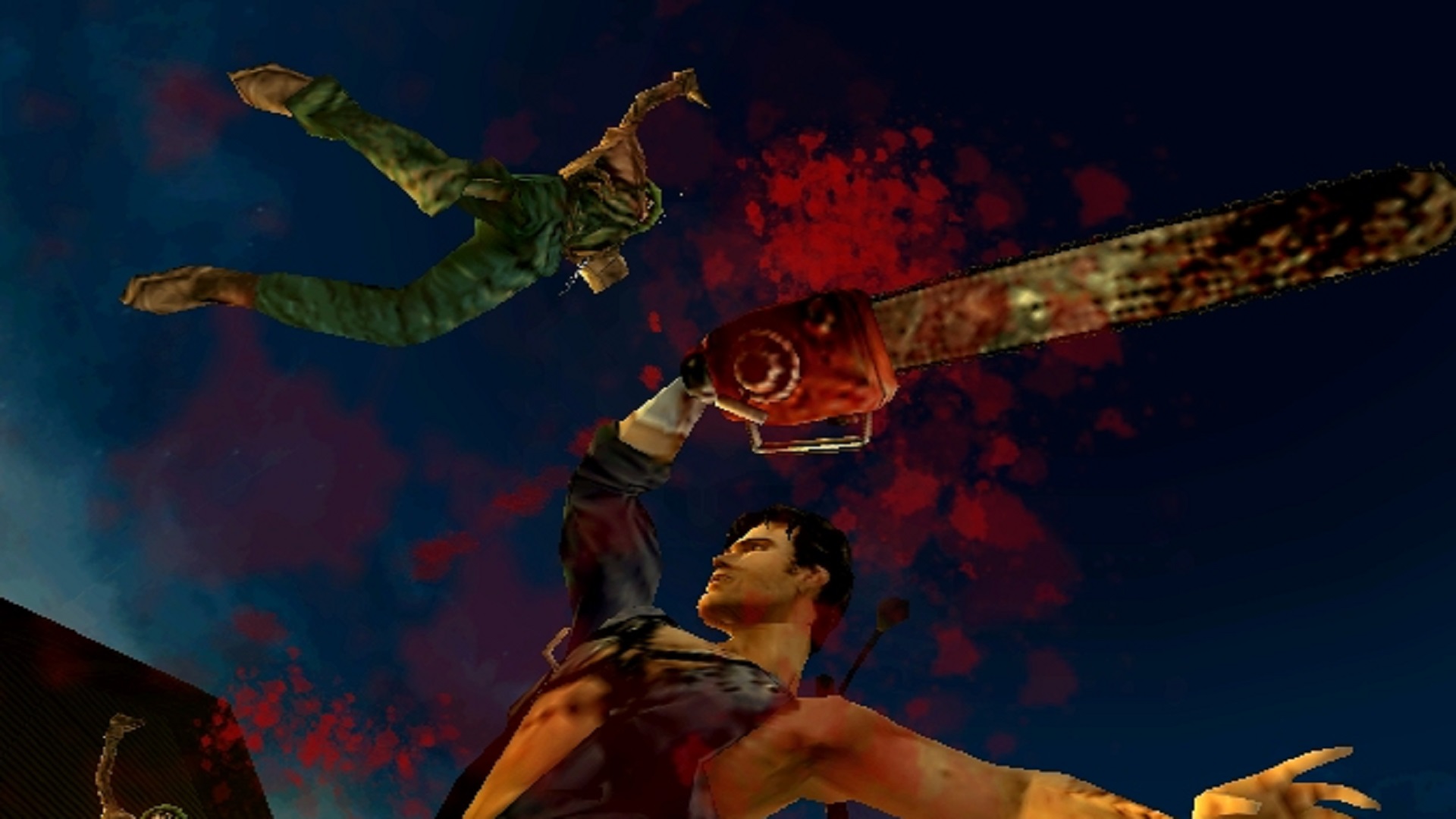
Load your shotgun, refuel your chainsaw and rev up the Oldsmobile: this month we’re going on a joyride to explore some classic ghoul gibbing served up Ash-Williamsstyle. With another Evil Dead game set to burst its way out of the ground in February, now is as good a time as any to review one of the higher points in Ash’s prior forays into videogames: Evil Dead: Regeneration.
Regeneration was developed by Cranky Pants Games, a studio founded by several former employees of EA Seattle and owned by THQ. Holder of the Evil Dead game licence, THQ had previously published two titles based on it: 2000's Evil Dead: Hail To The King for PS1, Dreamcast, and Windows; and 2003's Evil Dead: A Fistful Of Boomstick for PS2 and Xbox. Looking to make another instalment in the franchise, THQ passed the project onto Cranky Pants, which had previously cut its teeth on GameCube ports of the Red Faction and Summoner games.
Tongue-in-cheek comedy
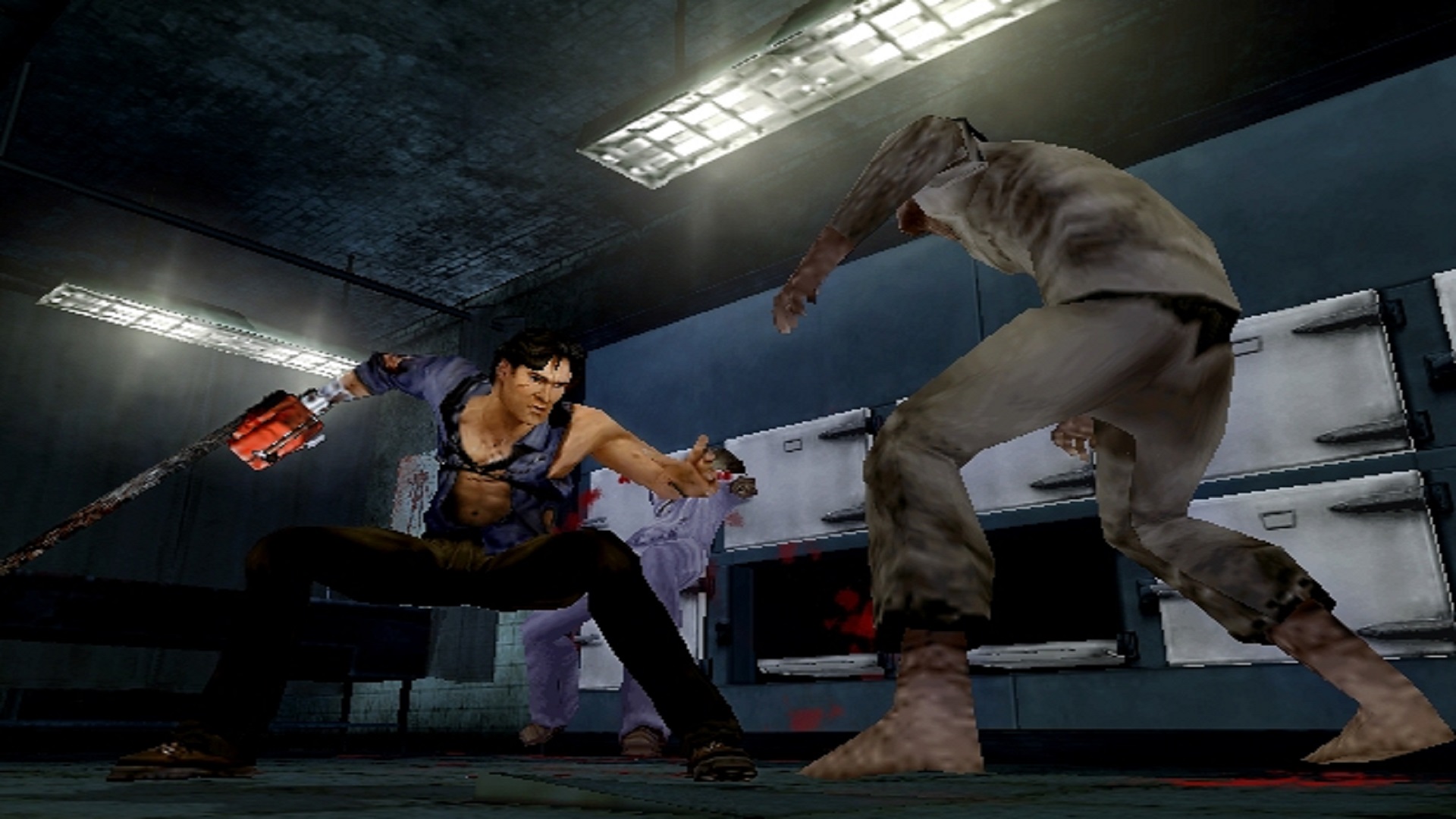
Regeneration is a third-person, single-player action hack-and-slash game released in 2005 for PlayStation 2, Windows, and Xbox. It takes place in an alternate universe where Ash hadn’t been sucked back in time at the end of the second film. After a short intro sequence in Dr Knowby's familiar decrepit cabin, Ash instead finds himself locked away in Sunny Meadows asylum for the criminally insane, having been blamed for the massacre of his friends during that infamous night.
Unfortunately for Ash, one of the few people to believe his story is his psychiatrist, Dr Reinhard, who has secretly attained the Necronomicon and has been experimenting with it to further a plan for – what else? – world domination. Accidentally unleashing the book's evil, Reinhart is consumed by its power and escapes to a nether realm, leaving it up to Ash to stop the diabolical doctor and send the Deadites back to hell once more.
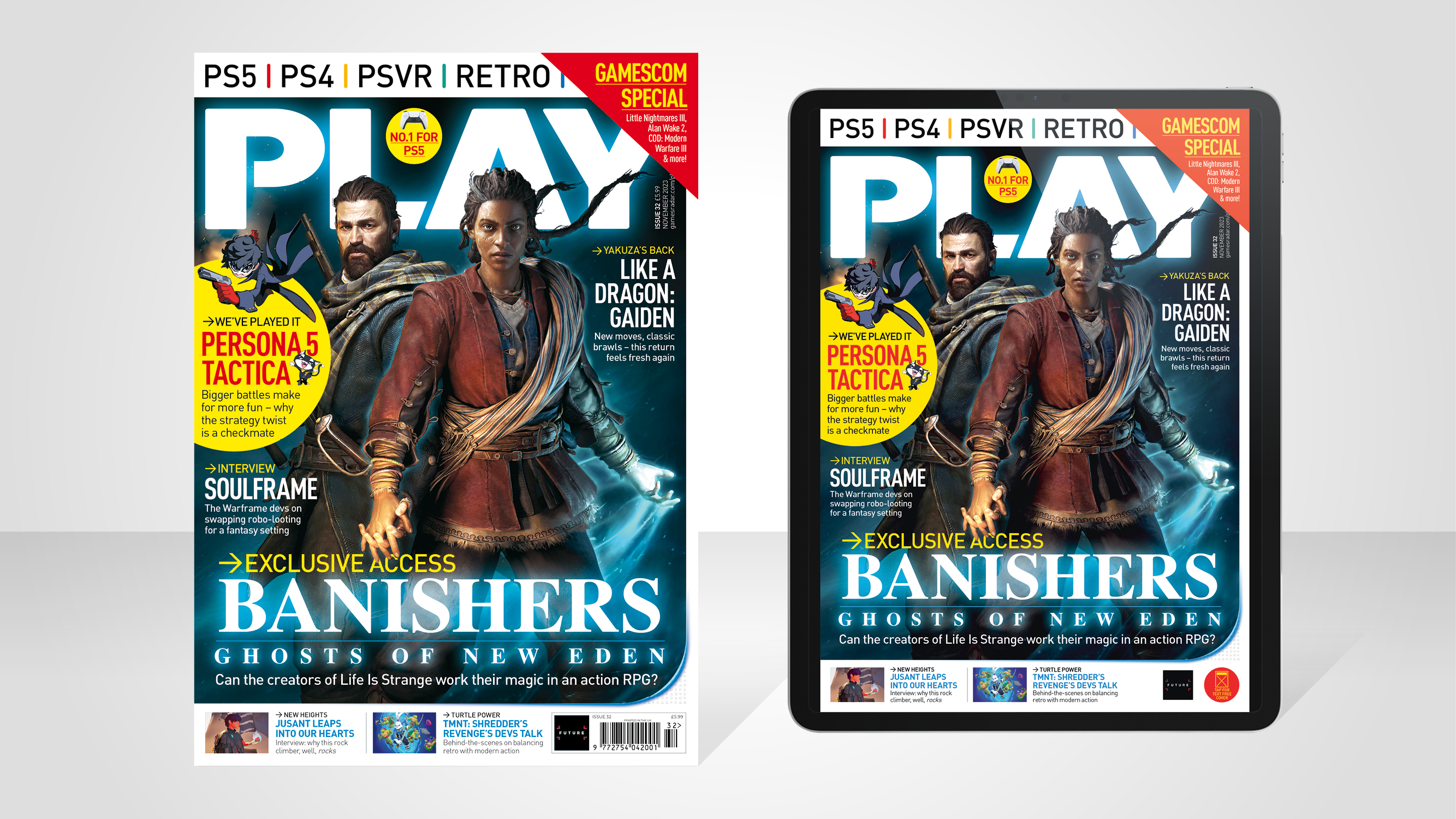
This feature originally appeared in Play Magazine. For more great features, interviews, and more delivered to your digital device or doorstep, subscribe to Play Magazine.
The overall tone is one of campy fun, evoking the tongue-in-cheek comedy of the latter two films rather than the more straightforward horror atmosphere of the very first movie. "Very early on it felt like we were headed in more of an 'Evil Dead one' direction,'" recalls animator Doug Magruder, "but as it evolved we shifted pretty significantly and looked to Evil Dead II as the world we would live in. We found that we really liked the mix of horror and humour and attempted to push both where we could."
Evil Dead's action embraces the mixture of comedy and gore too, eschewing the traditional trappings of survival horror seen in games like Resident Evil, Silent Hill, and even THQ's own Hail To The King. For example, you control the camera rather than view things from fixed perspectives, Ash doesn't use tank controls, and all ammunition is unlimited, placing the emphasis squarely on combo-driven action.
"As a huge fan of the franchise, Sam Raimi's work, and, of course, Bruce Campbell, I wanted to find a way to capture the quirky dark humour of the franchise, while also creating a compelling action experience for our players," says Andy Beaudoin, Regeneration's lead designer. "After Army Of Darkness saw success, I suspected there were many fans that associated the slapstick action of that film with the franchise over slower-paced, more horror-centric themes of the first two films. Given that, I looked to action games like Devil May Cry for its dual-wielding gameplay and [2002's] Buffy The Vampire Slayer for its great choreographed character animations for inspiration."
Sign up to the GamesRadar+ Newsletter
Weekly digests, tales from the communities you love, and more
Ash's arsenal
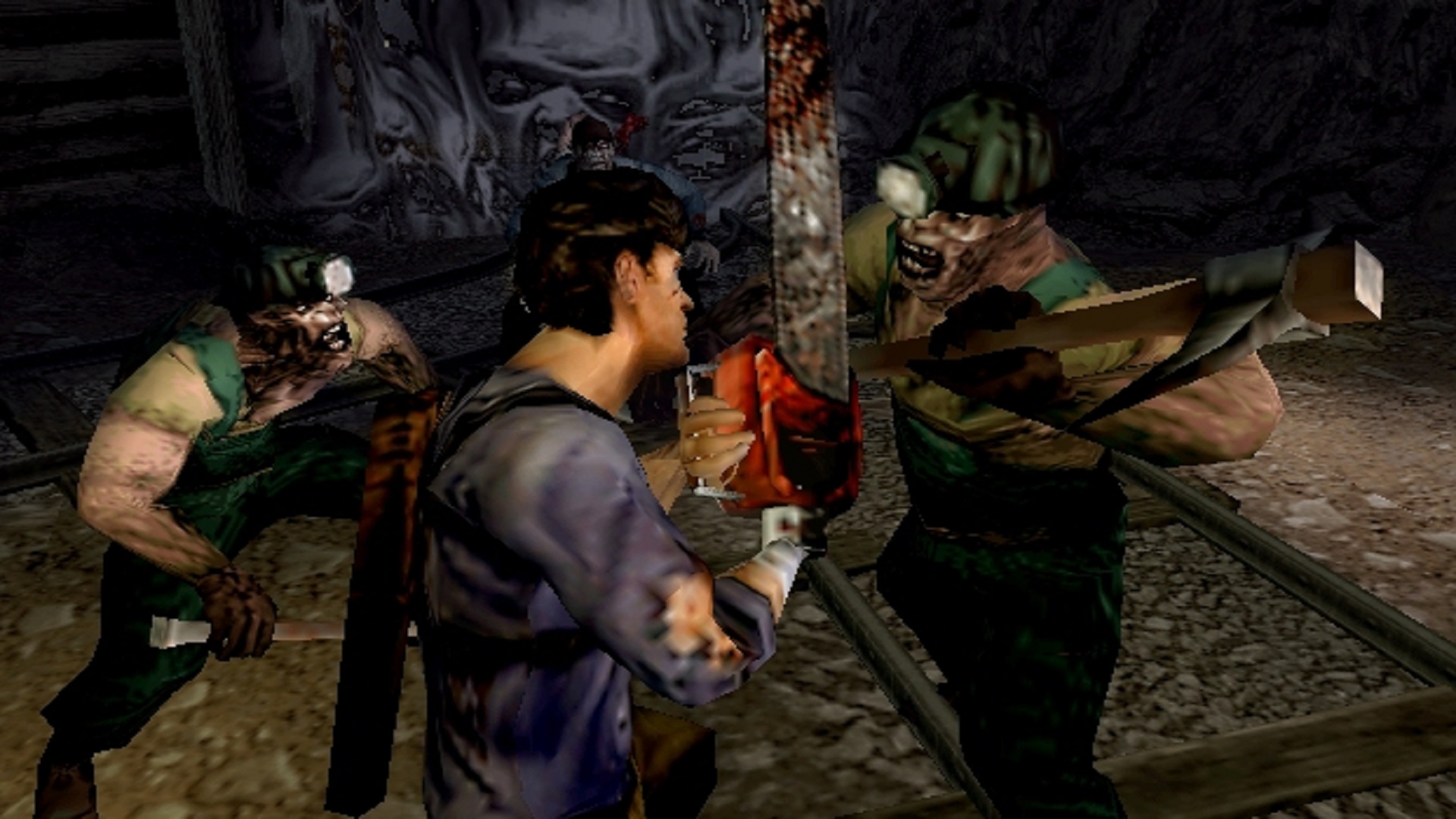
If you haven't guessed it by this point, combat is the name of the game in Regeneration. Some light puzzle-solving elements aside, most of the time you’re beating, butchering, or boomsticking your way through hordes of Deadites and less nameable creatures. Ash's arsenal is split between equipment held in his left hand and that mounted on his right stump, with separate buttons assigned to each. In addition to the classic shotgun-andchainsaw combo, Regeneration gives you access to a fast-firing pistol, an exotic 'bomb-lance' (a sort of speargun/grenade launcher hybrid), a jury-rigged flamethrower, and a harpoon gun that can snag enemies like fish on a line.
With the pistol, shotgun, and bomb lance in Ash's left hand and the others on his right, you can mix-and-match your loadout to face off against the legions of darkness the game throws at you across its ten levels. These see Ash traversing a variety of sinister locales, including creepy crypts, mines, fishing towns, forests, and even a temple within the sinister dimension of the Dark Ones.
Beside combat, Regeneration's other important feature is Sam, a foul-mouthed former test subject of Reinhard, turned into a half-Deadite by the good doctor’s experiments, who teams up with Ash on his journey. Fortunately – or possibly unfortunately – for our stalwart hero, Sam’s conversion into one of the undead has done little to dampen his abrasive personality. The banter between the pair is the source of most of the comedy, with Bruce Campbell providing his talents as Ash and Ted Raimi (brother of movie director Sam Raimi) voicing Sam.
"A sidekick was a creative mandate from on high, so we set out to find a way to make him a fun and integral part of the gameplay rather than just a tagalong," says Beaudoin. "Given the slapstick undead world of the films, and the false bravado and somewhat bullyish buffoonery of Ash, we figured teaming him up with something he hates more than anything – a Deadite – would provide a 'buddy film' dynamic that could carry a bunch of humour."
Sam isn't just a narrative feature, either. Due to his cursed, half-Deadite nature, he is practically immortal, able to regenerate a new copy of his body upon 'death'. This opens up some suitably grisly puzzlesolving opportunities, with Ash able to dropkick his hapless partner onto or into anything blocking the path completely free of consequences, and even possessing him directly during certain sequences. Sam is also useful in combat, as Ash can boot him onto enemies to distract them or pull off their heads, and he’s often needed to help defeat the game's handful of bosses.
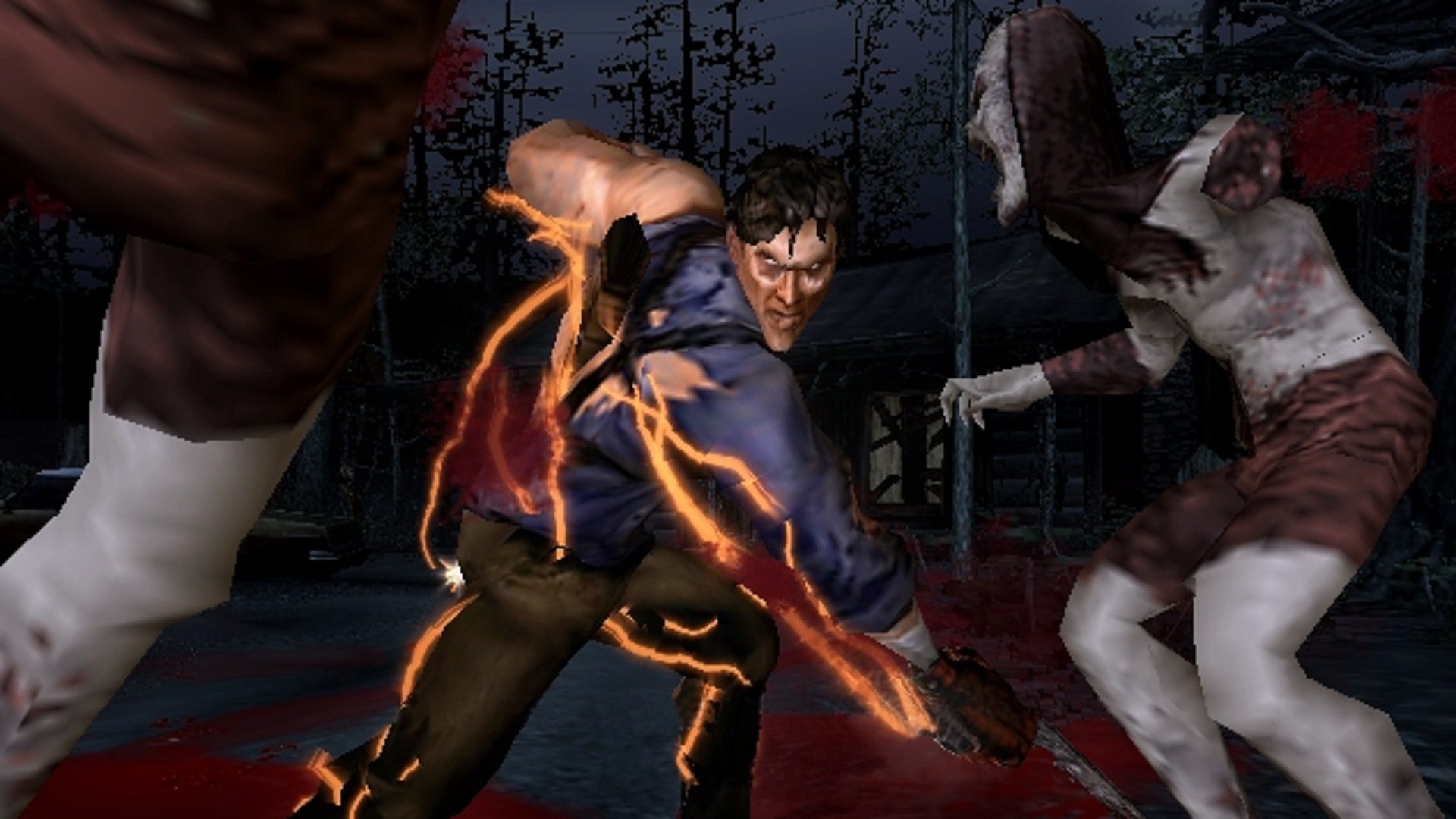
In the end, Evil Dead: Regeneration is a mixed bag. It'd be difficult to label it as a forgotten masterpiece, and it has a number of areas that let it down somewhat. For one thing, it's aggressively short, clocking in at only around four hours, and apart from a few behind-the-scenes bits has no real bonus content to speak of. The puzzle sequences often feel more like busywork than actual brainteasers, and the comedy tends to fall a bit flat, despite a few suitably Ash Williams-ey quotes. Overall, it's hard to avoid the feeling that moment-to-moment action is a bit anaemic, lacking sufficient depth to keep players coming back. Having said all this, what is there is surprisingly solid, maximising the feeling of player empowerment with the few mechanics it does have.
It's fun to see how each weapon combination fares against the various monsters, and the neat dismemberment system that gives Regeneration that signature Evil-Dead-style slapstick gore. When you carve up a Deadite like a Christmas turkey, fling him into the air, and then keep him afloat by shooting his limbs off, it's hard not to crack a grin. The cartoony art style also helps to sell the more comedic angle, Ash comes with some classic B-movie hero finishing moves, and the bosses do a good job of testing the mechanics the game has thrown at you up to that point.
When Regeneration is firing on all cylinders, it's clear that the developers had a blast working with the source material, and this enthusiasm compensates for some of its more humdrum aspects. If you’re an Evil Dead nut, or want some goofy horror action for a few hours, Evil Dead: Regeneration is worth checking out. Who knows? You may even find it… groovy.
This feature originally appeared in Play Magazine. For more great features, interviews, and more, subscribe to Play Magazine.
James is a freelance games writer based in not-so-jolly old England. When he’s not scrounging for his next writing gig, he’ll be hunting for new survival horror games to play and wishing he was back in the 90's again. He's proud to admit that he hasn't played a Call of Duty game in at least a decade, but less so that he spends more time than is healthy trying to get a stable 60 FPS on most of his games.


